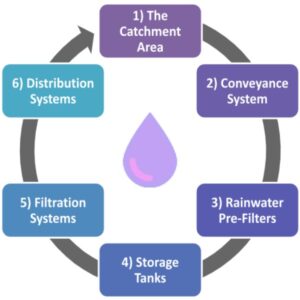Components of a Rain Collection System
This article will detail:
- The Catchment Area
- Conveyance System
- Rainwater Pre-Filters
- Storage Tanks
- Filtration Systems
- Distribution Systems
- What to Consider
- Frequently Asked Questions
1) The Catchment Area
Among the various components of a rainwater harvesting system, the catchment area stands out as one of the most crucial. Typically, rooftops serve as the primary catchment area, making them the first point of contact for collecting rainwater. The surface of your rooftop significantly influences both the efficiency of water collection and its quality.
Types of Rooftop Catchment Areas
Rooftops used for rainwater harvesting can differ greatly in terms of material and design. From the expansive, flat roofs of commercial buildings to the sloped and tiled roofs of residential properties, each type presents its own set of benefits and challenges. The material used for the roof—whether metal, tile, asphalt shingles, or green roofing—plays a key role in determining the quality of the harvested water. For example, metal and clay tile roofs are often preferred for rainwater collection because they tend to provide cleaner water, as they are less likely to leach chemicals or trap contaminants compared to asphalt shingles.
Factors to Consider
When evaluating a rooftop as a catchment area for rainwater harvesting, several important factors should be taken into account:
- Roof Surface Area: The size of the roof directly affects the volume of rainwater that can be captured. Larger roofs have the capacity to collect more water, making them suitable for systems with higher water demands.
- Roofing Material: The choice of roofing material is essential. Smooth, non-absorbent materials like metal are ideal as they facilitate optimal water runoff and reduce the risk of contamination. Some materials might require additional filtration or treatment to ensure that the harvested rainwater is safe for its intended use.
- Roof Slope: The pitch or slope of the roof impacts how effectively rainwater is directed to gutters and downspouts. Roofs with a well-designed slope can enhance water collection by minimizing water evaporation and reducing the chances of water stagnation, which can lead to debris accumulation or mosquito breeding.
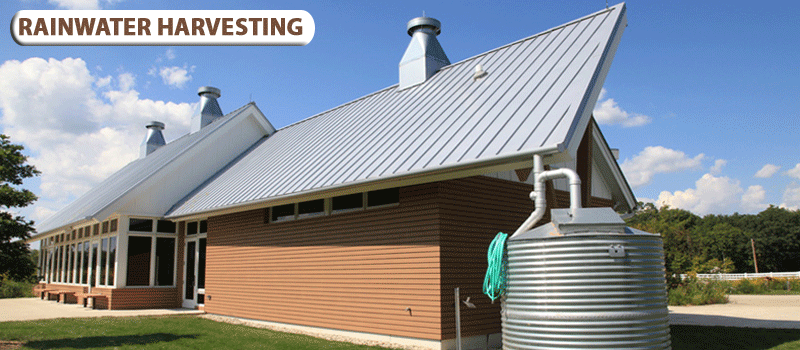
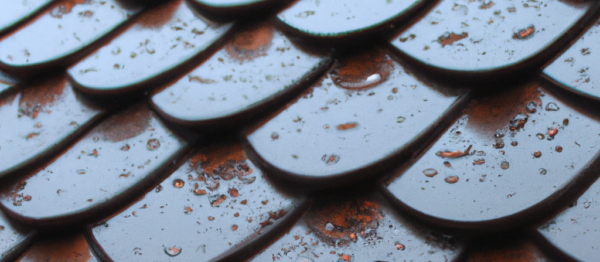
2) Conveyance System
An essential aspect of a rainwater harvesting system is the conveyance system, which is responsible for directing water from the rooftop to the storage tanks. This system primarily consists of gutters and downspouts. Their design and material are critical for ensuring that harvested rainwater is transported efficiently and cleanly, minimizing both losses and contamination.
Gutters: Collecting the Water
Gutters are horizontal channels installed along the edges of the roof to collect rainwater and direct it towards the downspouts. The effectiveness of the gutter system depends on its ability to handle the volume of water from the roof during heavy rainfall while preventing overflow. Gutters come in various materials, including aluminum, vinyl, stainless steel, and copper. Each material has its own set of advantages:
- Aluminum: Lightweight, resistant to corrosion, and relatively affordable, making it a popular choice.
- Vinyl: Cost-effective and easy to install, though it may be less durable in extreme weather conditions.
- Stainless Steel: Highly durable and resistant to corrosion but often more expensive.
- Copper: Very durable and has an attractive appearance, though it is usually the most costly option.
Downspouts: Directing the Flow
Downspouts are vertical pipes that carry water from the gutters down to the storage system. They are crucial for managing the controlled flow of rainwater, ensuring that it does not overflow from the sides of the building. Like gutters, the choice of material for downspouts affects their durability and performance. Additionally, the number and placement of downspouts are determined by the size and design of the roof to ensure that water is evenly distributed and effectively directed into the storage tanks.
Importance of Material and Design
Selecting appropriate materials for gutters and downspouts is important based on local climate conditions, rainfall amounts, and the quality of water required. Preferred materials are those that resist corrosion and wear, and do not leach harmful substances into the water. Moreover, the design of the conveyance system—such as the slope of the gutters, the size of the downspouts, and the integration of leaf screens or guards—plays a significant role in maintaining water quality and flow. Proper design helps to reduce blockages and minimize maintenance, ensuring that the system remains efficient and effective over time.
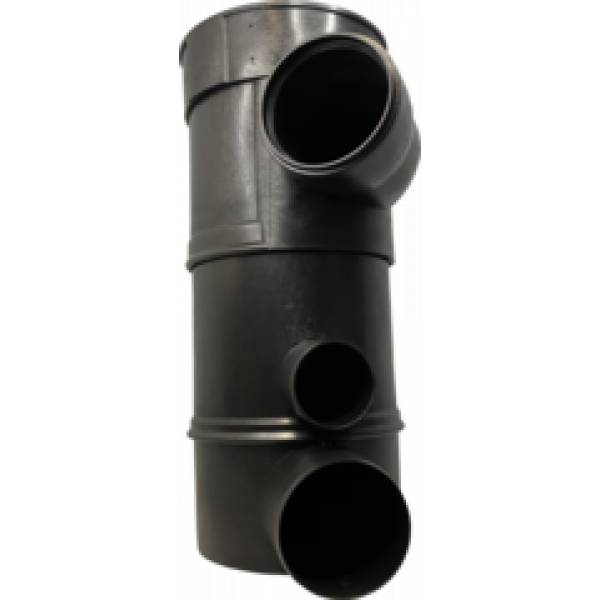

3) Rainwater Pre-Filters
The next important component in a rainwater harvesting system is the pre-filter. Filtration is a key step in ensuring the quality of rainwater collected from rooftops. By removing debris and contaminants, filters help maintain clean and safe water for its intended use. Effective filtration is crucial because it eliminates large particles that can carry harmful bacteria, thus protecting the water quality.
Types of Filters
Several types of filters can be used in rainwater harvesting systems, each serving to remove impurities and ensure clean water:
- In-Line Filters: These are installed directly in the pipe that carries water from the downspouts. They are effective at filtering out debris as water flows through them.
- Vortex Filters: Designed to create a swirling motion that separates debris from the water. This type of filter is often used for its ability to handle larger volumes of water and to efficiently remove particles.
- Horizontal Filters: These filters are positioned horizontally in the system and can be useful for managing high flow rates and filtering larger quantities of water.
Filters come with varying micron sizes, with some capable of filtering particles down to 280 microns. To give you an idea, particles larger than a grain of sand will be effectively removed by filters with such fine micron sizes.
Filter Placement
You have options when it comes to where to place your filters. You can install a filter on each downspout individually, or you can collect rainwater from multiple downspouts into a single pipe and use one filter for the entire system. Both approaches can be effective, depending on your system’s design and the volume of rainwater you need to manage.
By integrating a well-chosen pre-filter into your rainwater harvesting system, you help ensure that the water stored is clean and suitable for its intended uses.
4) Storage Tanks
No rainwater harvesting system is complete without a storage tank. The choice of tank—whether above ground or below ground, and the material from which it is made—plays a significant role in the system’s efficiency, cost, and longevity. Common materials for these tanks include polyethylene, fiberglass, and metal, each offering distinct advantages and challenges. Proper sizing of these tanks is also essential to ensure that the supply of harvested rainwater meets the demand.
Polyethylene Tanks
Advantages: Polyethylene tanks are popular due to their durability, lightweight nature, and resistance to corrosion. They are relatively cost-effective and come in various sizes, making them suitable for both residential and commercial applications, whether installed above or below ground. Their non-corrosive properties help in maintaining the quality of the stored rainwater.
Disadvantages: One drawback of polyethylene tanks is their potential degradation over time when exposed to UV light. This means they need to be placed in shaded areas or treated with protective coatings to extend their lifespan. Additionally, these tanks have a maximum size limit, which might necessitate the use of multiple tanks for larger systems.
Fiberglass Tanks
Advantages: Fiberglass tanks are known for their rigidity, which allows for relatively thin tank walls. This material is also easy to repair if damaged, making it a practical choice for many applications.
Disadvantages: The rigidity of fiberglass also makes it brittle and prone to breakage. Fiberglass tanks allow more sunlight to penetrate, which can promote algal growth unless the tanks are coated with an additional layer to block light.
Metal Tanks
Advantages: Metal tanks, particularly those made from stainless steel, are extremely durable and can withstand a wide range of temperatures and environmental conditions. They are resistant to cracking and can be designed to hold large volumes of water, making them suitable for industrial or large-scale residential uses.
Disadvantages: Metal tanks are generally more expensive than polyethylene or fiberglass options. Additionally, certain metals can corrode if not properly treated or if the water stored is not suitable, requiring regular maintenance and potentially higher operational costs.
Sizing Considerations
Selecting the appropriate size for a rainwater storage tank involves balancing factors such as the available catchment area, average rainfall, and the intended use of the harvested water. It is important to estimate the maximum potential collection volume while taking into account practical space and budget limitations. Oversizing a tank can lead to unnecessary costs, while undersizing may result in insufficient water during dry periods. For assistance in determining the right size for your rainwater storage tank, RMS provides a tank sizing request form to help you find the best solution for your needs.
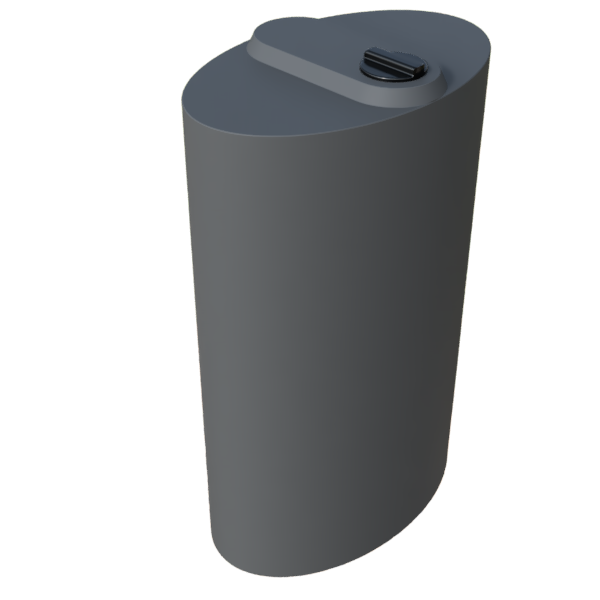
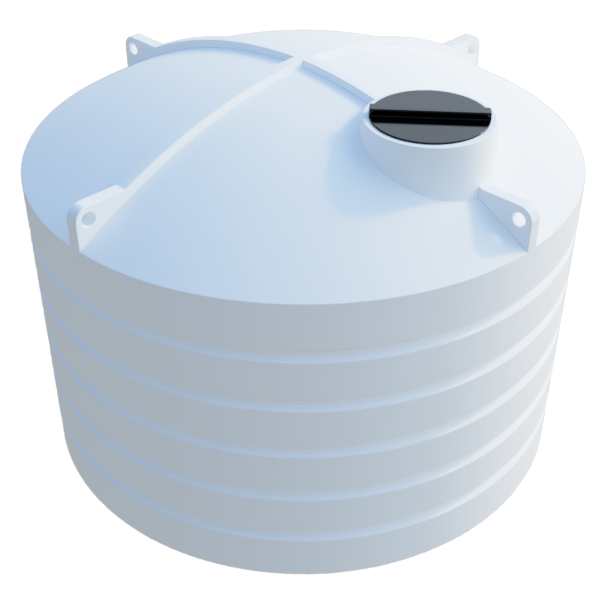
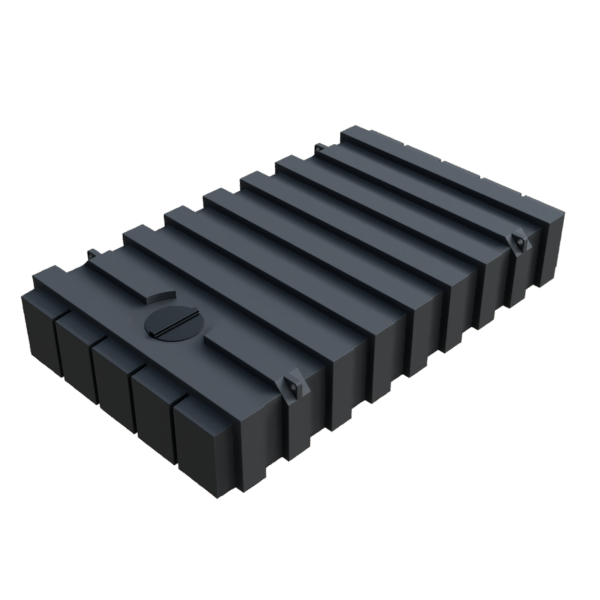
5) Filtration Systems
If you plan to use collected rainwater indoors, incorporating a whole house filtration system is essential. As rainwater moves over the roof and through the collection system, it can gather a range of contaminants, such as dust, organic material, and atmospheric pollutants. While rainwater used for garden irrigation or certain industrial processes might not need extensive treatment, any indoor use involving human contact or consumption requires higher water quality standards.
Whole house filtration systems are designed to address these needs by thoroughly purifying the harvested rainwater to ensure it meets safety and health standards. These systems help remove contaminants and improve water quality, making the water safe for domestic use. Implementing an effective filtration system is crucial for protecting health and ensuring the safety of indoor rainwater applications.
Sediment Filtration
Sediment filtration is a crucial first step in a comprehensive rainwater filtration system. These filters are designed to remove physical contaminants such as dust, soil, and debris from the collected rainwater. By capturing larger particles, sediment filters act as a preliminary barrier, protecting subsequent filtration stages and equipment.
This initial filtration is especially important for systems that include ultraviolet (UV) disinfection. Sediment filters prevent larger particles from interfering with or damaging sensitive UV equipment and piping. By ensuring that the water is relatively free of sediments, these filters help the UV system operate at its maximum efficiency, providing a more effective disinfection process.
Carbon Filtration
Following sediment filtration, carbon filters further enhance water quality by addressing different types of contaminants. While sediment filters focus on removing larger particles, carbon filters are responsible for improving the water’s taste, clarity, and smell. These filters use activated carbon to eliminate organic substances, chlorine, and various chemical pollutants.
Placing the carbon filter after the sediment filter and before the UV disinfection stage ensures that the water is treated for both physical and chemical contaminants. This strategic placement allows for the removal of impurities that could otherwise affect the effectiveness of UV treatment, resulting in cleaner and purer water.
UV Light Disinfection
UV light disinfection provides a chemical-free method for purifying water. This system uses ultraviolet light to damage the DNA of harmful microorganisms, rendering them harmless and unable to reproduce. UV disinfection is highly effective when the water is relatively clear, allowing UV light to penetrate thoroughly.
This method is favored by many for its ability to avoid the taste and potential health risks associated with chemical treatments. By positioning the UV system as the final step, after sediment and carbon filtration, you ensure that the water is significantly purified before disinfection. This enhances the overall effectiveness of the UV treatment, delivering water that is safe and clean.
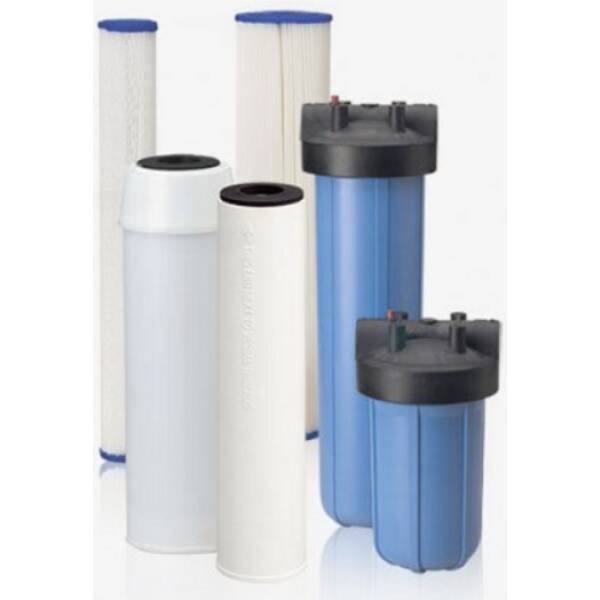
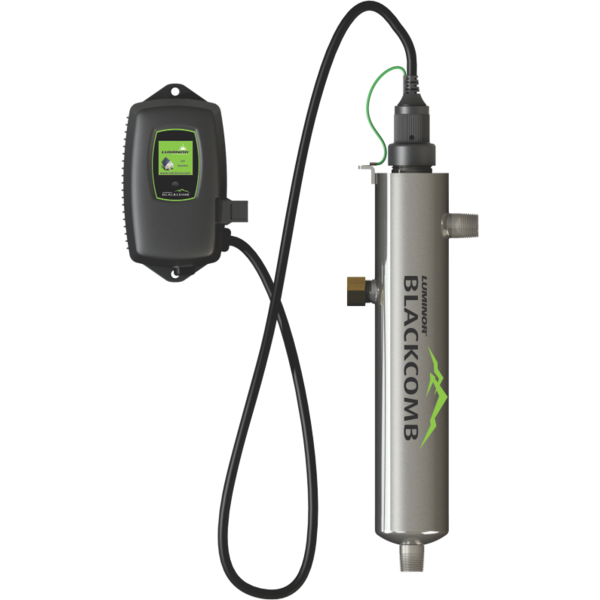

6) Distribution Systems
The distribution system is a crucial component of rainwater harvesting systems, responsible for delivering harvested rainwater to its various uses, such as irrigation, washing, or indoor applications. The efficiency of this system directly affects the overall performance of the rainwater harvesting setup. It consists of pumps and piping, which can be configured in either gravity-fed or mechanical systems, each offering distinct benefits and considerations.
Pumps and Piping: Essential Components
Pumps are central to mechanical distribution systems, moving water from storage tanks through the piping network to its intended destination. The choice of pump—whether submersible or external, manual or automatic—depends on factors such as the distance the water needs to travel and the elevation difference between the tank and the delivery point. Pumps enable water to be distributed over longer distances and to higher elevations, providing versatility and control in various applications.
Piping functions as the conduit through which water travels, ensuring it is transported efficiently and without leaks. Properly designed piping systems are essential for maintaining consistent water flow and pressure throughout the property.
Mechanical systems, powered by pumps, are highly adaptable and can be customized to meet specific pressure and flow rate requirements. They are suitable for a wide range of applications, from residential to commercial settings. However, these systems require electrical power to operate the pumps, which can lead to higher operational costs and necessitate regular maintenance.
Gravity-Fed Systems: A Simplified Approach
Gravity-fed systems use the natural force of gravity to distribute water, eliminating the need for pumps. In these systems, storage tanks are placed at a higher elevation than the points of use, allowing water to flow downward through the pipes. This method is simple and cost-effective, resulting in lower energy costs and reduced maintenance requirements.
Gravity-fed systems are ideal for locations with favorable topography where elevation differences can be easily utilized. They are environmentally friendly and can minimize operational expenses. However, their effectiveness depends on the site’s physical layout and building design.
Choosing the Right System
Selecting between a gravity-fed and a mechanical distribution system involves considering factors such as the site’s topography, water usage needs, and sustainability goals. A gravity-fed system might be the best choice for sites with suitable elevation, offering a cost-effective and low-maintenance solution. Conversely, mechanical systems provide the power and flexibility needed for more complex applications. Evaluating these factors will help you choose the most appropriate distribution system for your rainwater harvesting setup.
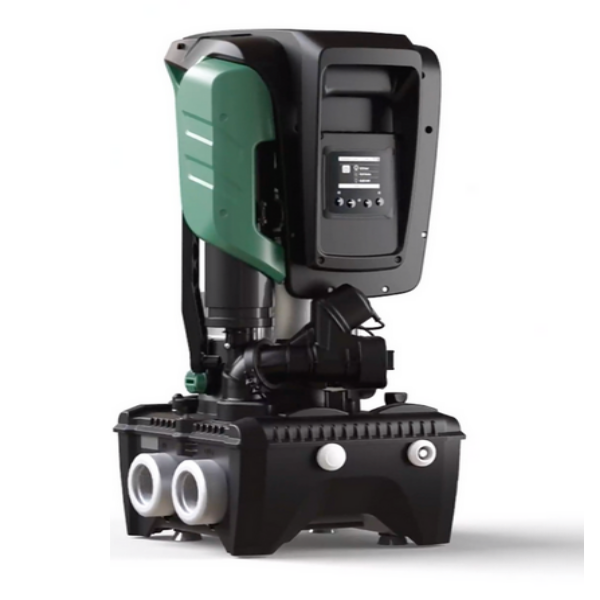
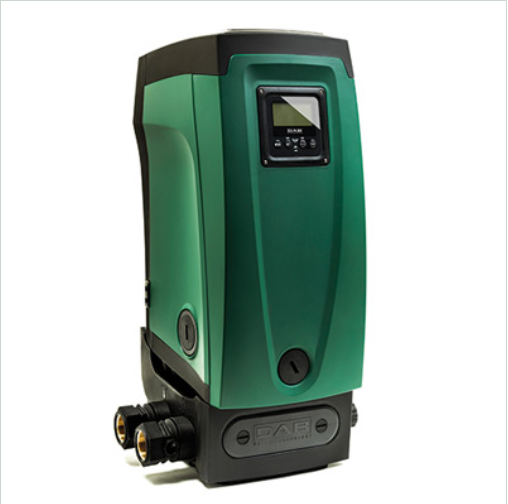

What to Consider?
Setting up a rooftop rainwater harvesting system is a meaningful step towards sustainability and self-sufficiency. To ensure that your system meets your needs and constraints, it’s important to make informed decisions about the components you will select. Answering the following critical questions will help you tailor your system effectively, ensuring efficiency and satisfaction:
- What is my budget?
Understanding your budget is essential for prioritizing key features and finding cost-effective options without sacrificing quality. A clear budget will help you make informed choices about which components to invest in and where you might need to compromise. - What is the quality and quantity of rainwater I can collect?
Assessing the quality and quantity of the rainwater you can harvest will guide your decisions on the type and size of storage and filtration systems needed. This ensures that your water is both safe and adequate for your intended uses. - What are my storage capacity needs?
Calculate your needs for non-potable uses, such as irrigation, toilet flushing, or laundry, and compare these with your potable water requirements. This will help you determine the appropriate size and number of storage tanks, as well as their optimal placement to meet your demands. - How will I use the harvested rainwater?
Understanding the specific ways you plan to use the harvested rainwater will ensure that your system includes the necessary components to make the water suitable for its intended purposes. Whether for irrigation, household use, or other applications, the system should be configured to meet these needs effectively. - Are there any specific local regulations I need to comply with?
Be aware of local regulations, including construction permits and water quality standards, that may affect your rainwater harvesting system. Ensuring compliance with these regulations is crucial to avoid legal issues and to meet all necessary standards for safe and effective water use.
By addressing these questions, you can design a rainwater harvesting system that aligns with your goals and constraints, ensuring both efficiency and long-term satisfaction.
FAQ - Rainwater Harvesting in Canada
Rainwater:
Fresh rain fall from the sky that has not yet come into contact with any ground surfaces. When collected from a roof surface, rainwater maintains its natural quality.
Stormwater:
Rainwater resulting from a rainfall event that has touched the ground surface and remains unmanaged at the source. Stormwater must be further managed along the flow path through storm water systems.
Groundwater:
Water present below the earth’s surface, stored in aquifers and available through wells.
Surface Water:
Water present on the earth’s surface, including lakes, streams, and rivers.
GUDI (Groundwater Under Direct Influence of Surface Water):
Refers to shallow wells or areas where ground water is directly influenced by surface water, such as foundation drainage.
Potable Water:
Water that is safe for human contact, consumption, and food preparation.
Grey water:
Once-used water discharged from washing machines, showers, bathtubs, bathroom sinks, etc. Grey water does not contain fecal / urine contamination.
Black water:
Once-used water discharged from kitchen sinks and toilets, which may contain fecal / urine contamination.
Rainwater harvesting has two main processes: the collection and reuse of rainwater.
Rainwater collection involves the use of specialized storage systems designed to prefilter and gather rainwater through catchment, conveyance, and storage. It’s important to note using a roof surface to collect rainwater is best to maintain purity. If rainwater comes into contact with the ground, it becomes classified as stormwater, and due to higher contamination levels, treating stormwater for reuse requires different, more expensive technology compared to rainwater.
We achieve rainwater reuse by putting rainwater pumps, filters, treatment, and controls into action. These make sure that the collected rainwater goes where it’s needed and meets safety standards for its intended uses.
Properly planned rainwater harvesting systems can provide all the water needs and serve a wide range of purposes. These systems are increasingly being integrated into urban settings across Canada to reduce water demand on community infrastructure. Rainwater harvesting can be as simple as using a rain barrel at the end of a downspout or as sophisticated as employing a multiple-end-use underground storage system. Harvested rainwater can be used outside for irrigation, indoors for toilet flushing and laundry, and with proper sanitation, even as drinking water.
The scope, treatment method, and technologies of the rainwater harvesting system will vary depending on the specific end-use of the water. We offer comprehensive solutions, addressing everything from the roof to the tap and every detail in between, to ensure efficient rainwater harvesting and usage.
- Financial Benefit:
- Save money through water re-use.
- Reduce water bills, including city storm sewer charges.
- Alleviate demand on city water supplies.
- Significant cost savings over time.
- Storm Water Management:
- Catch and manage storm water, reducing flooding risks around the foundation area.
- Capture urban runoff to prevent erosion, property floods, and contamination.
- Access to Potable Water:
- Obtain a free, high-quality water source from Mother Nature.
- Enjoy soft water with a neutral pH.
- Avoid disinfection by products, salts, minerals, and other contaminants.
- Store seasonal rainfall for use during droughts and water bans.
Rainwater harvesting is an emerging movement that promotes environmentally ethical and sustainable communities. By using this practice, individuals can actively join in water and energy resource reuse and recycling. Rainwater harvesting contributes to the overall goal of sustainable housing and community infrastructure and serves as a step towards adopting a green lifestyle paradigm. Furthermore, reusing water helps conserve significant amounts of energy, benefiting both the environment and the community. For example, the City of Toronto spends approximately 33% of its annual electricity use on water pumping and treatment.
Our Rainwater Systems are designed to be used for three different levels:
- Irrigation only
- Toilets, laundry, and irrigation
- Drinking potable water and human contact
Rainwater harvesting systems are subject to local building codes in each jurisdiction. Our rainwater systems adhere to CSA standards for rainwater and stormwater re-use. They are engineered to comply with the specific laws, regulations, and guidelines required for obtaining permits in each municipality. Cleanflo ensures that your project meets the necessary criteria for approval and success.
For a comprehensive rain harvesting system integrated into a building, it is crucial to seek expert advice for designing the system and obtaining regulatory permission.
During the installation of a rain harvesting system, it is essential to provide clear warnings against cross-connecting rain harvesting lines with indoor potable lines. Additionally, all pipes and faucets, whether indoors or outdoors, should be appropriately marked as ‘non-potable supplies not suitable for drinking.
The Gross potential volume of rain that can be harvested from your roof is based on two main factors roof area and rainfall. A single square metre (ROOF AREA) multiplied by 1 millimetre of rain (Rainfall) equals 1 litre of water, is the rule of thumb.
The actual amount of rainwater harvested will be less due to loss from wind, roofing material, prefilter and overflow events.
the Size of rainwater systems cistern is determined by three factors:
- Catchment area (the area of the roof).
- Intended use and expected daily water needs (in liters or required rainwater).
- Potential rainfall amounts (based on location).
After calculating the ideal amount of rainwater that can be collected, users need to assess if their anticipated water needs will surpass the available rainwater. In case additional water is required, this can be accomplished by either supplementing rainwater with municipal water supply or by incorporating the utilization of grey water sources.
The Canadian Mortgage and Housing Corporation has issued guidelines for rainwater harvesting systems, which include tables to help estimate the optimal rainwater cistern size.
Our rainwater systems can be used all year and WILL NOT freeze.
- Seasonal rainwater systems need to be decommissioned in winter months. A seasonal rainwater system uses a rainwater tank that is NOT heated or buried below frost line.
- Year -Round rainwater systems DO NOT need to be decommissioned in winter months. The rainwater tank is usually in a heated location or buried below frost line. As well the inter-connective piping is installed to meet the requirements for Year – Round rainwater system installation.
Looking for installation & professionally designed system?
We are proud to be the authorized dealer of Clean Flo Water Technologies Rainwater Harvesting Systems: Rain Seeker, Rain Seeker Maximums, Vida Rainwater Appliance, Clean Flo NSF P151 Potable Roofing and gutters, and much more !
